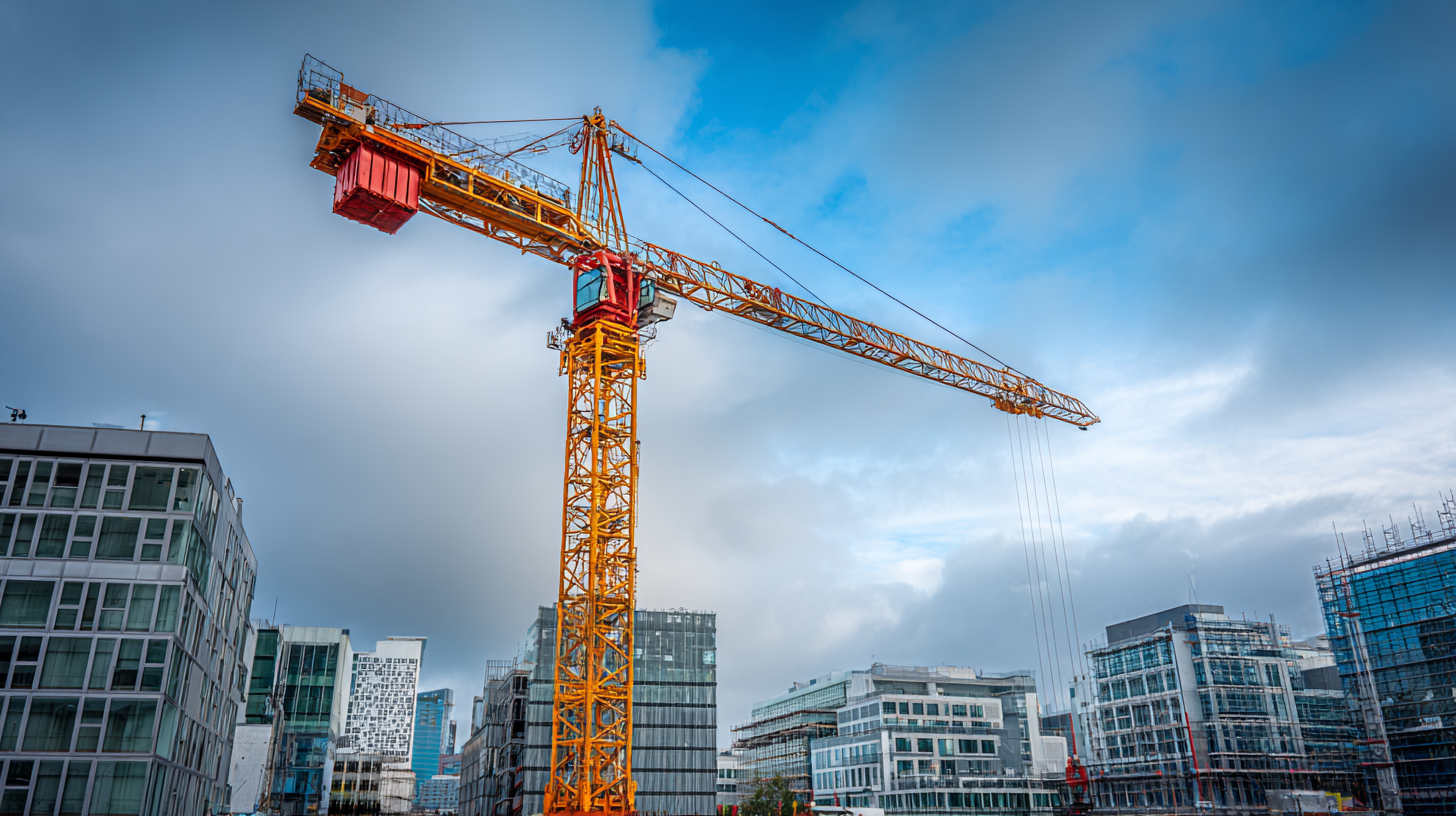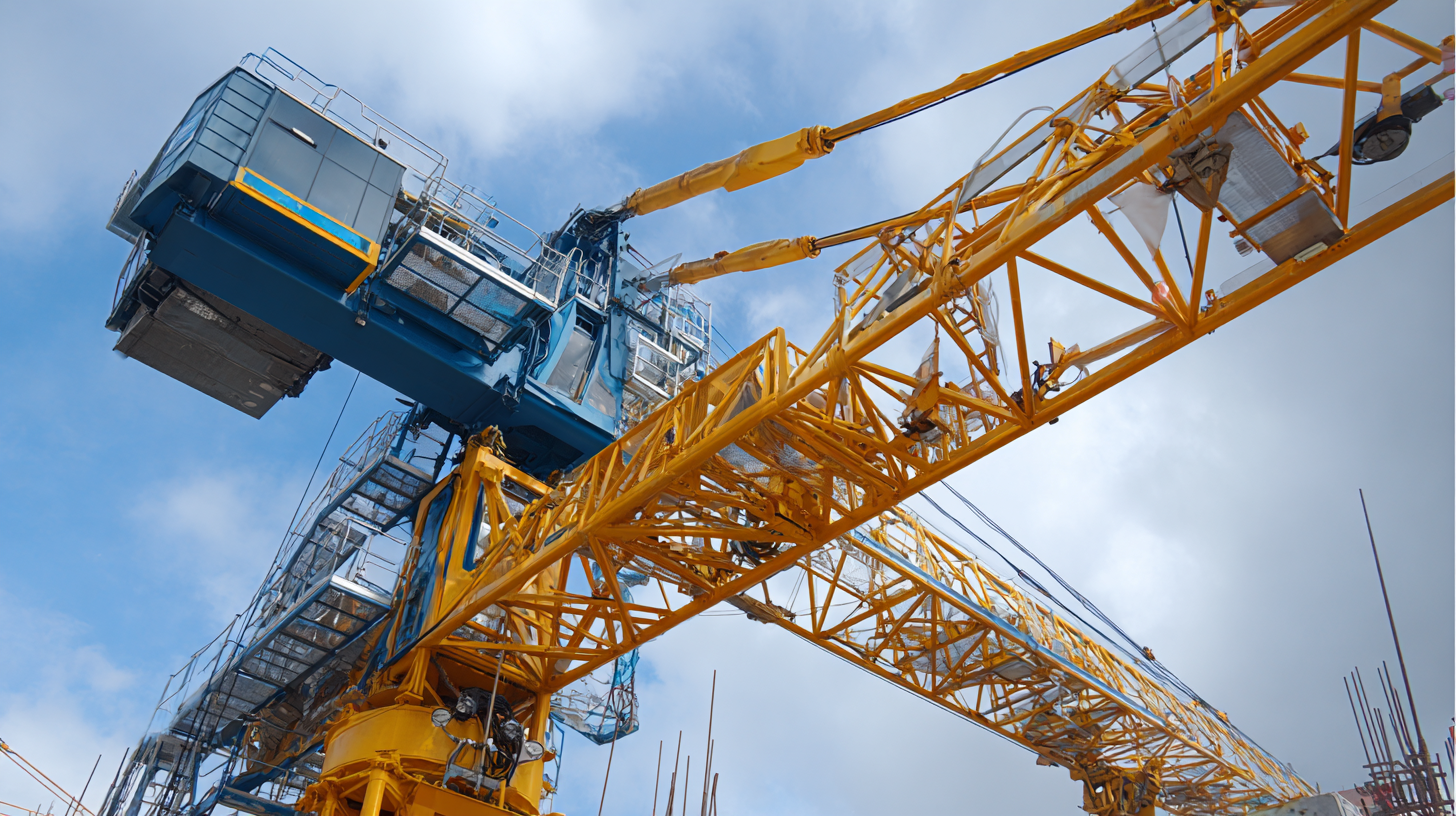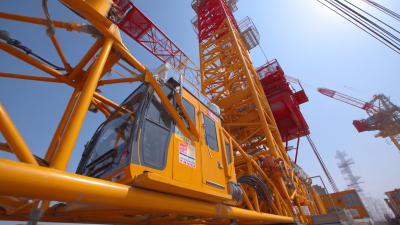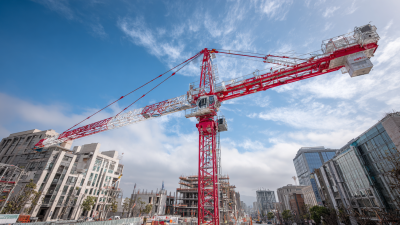 In the realm of modern construction, the efficient and strategic use of heavy machinery is paramount to the successful execution of projects. One such vital piece of equipment is the Tower Crane Mobile, which plays a pivotal role in lifting and moving materials to significant heights and across substantial distances on construction sites. Understanding how to effectively integrate a Tower Crane Mobile into your construction operations can lead to improved productivity, safety, and overall project timelines. This article will delve into the best practices for utilizing Tower Crane Mobile, from selecting the appropriate model for specific project needs to optimizing its placement and operation. By mastering these techniques, construction professionals can leverage the full capabilities of Tower Crane Mobile, ensuring that they remain competitive and successful in a dynamic industry.
In the realm of modern construction, the efficient and strategic use of heavy machinery is paramount to the successful execution of projects. One such vital piece of equipment is the Tower Crane Mobile, which plays a pivotal role in lifting and moving materials to significant heights and across substantial distances on construction sites. Understanding how to effectively integrate a Tower Crane Mobile into your construction operations can lead to improved productivity, safety, and overall project timelines. This article will delve into the best practices for utilizing Tower Crane Mobile, from selecting the appropriate model for specific project needs to optimizing its placement and operation. By mastering these techniques, construction professionals can leverage the full capabilities of Tower Crane Mobile, ensuring that they remain competitive and successful in a dynamic industry.
Selecting the right tower crane for a construction project is a critical step that can significantly influence project efficiency and safety. A thorough understanding of the different crane types and their specifications is essential. For instance, a system boundary-based review highlights the importance of evaluating crane capabilities in relation to project requirements. Factors such as maximum lifting height, load capacity, and site layout are crucial in deciding which crane best fits the project's needs.
Moreover, considering local regulations and safety standards is vital. Each region may have its own rules regarding crane operations, especially when it involves hoisting loads over public spaces. Collaborating with experienced contractors and leveraging industry best practices can help project owners navigate these complexities effectively. By doing so, they ensure that the selected crane not only meets project demands but also complies with safety protocols, ultimately leading to a smoother construction process.

Mobile tower cranes have revolutionized the construction industry by offering numerous advantages that enhance project efficiency and flexibility. One of the most significant benefits is their adaptability to various site conditions. Unlike traditional fixed cranes, mobile tower cranes can be easily transported and set up in different locations, allowing for quick mobilization to meet the evolving needs of a project. This flexibility is essential for projects that require frequent changes in layout or location, ultimately saving time and reducing costs.
Another key advantage of mobile tower cranes is their compact design. These cranes occupy less space on site while still providing impressive lifting capacities and heights. This feature is particularly beneficial in urban environments where space is often limited. Furthermore, the ability to operate in confined areas without compromising performance enables construction teams to maximize site productivity. Ultimately, the strategic use of mobile tower cranes not only enhances operational efficiency but also contributes to safer work environments by minimizing risks associated with space and logistics.

When operating tower cranes, implementing essential safety measures is critical to ensure the protection of workers and the success of construction projects. According to the Occupational Safety and Health Administration (OSHA), crane-related accidents can lead to serious injuries and fatalities, making safety a paramount concern. Statistics from the Center for Construction Research and Training indicate that nearly 60% of crane accidents occur due to operational errors, emphasizing the need for comprehensive training and strict adherence to safety protocols.
One of the key safety measures involves regular inspections and maintenance of the crane. Operators are required to conduct pre-operation checks to identify any potential mechanical issues. Furthermore, ensuring that all personnel on-site are trained in crane operation and emergency procedures can reduce accident risks significantly. Data from the National Commission for the Certification of Crane Operators (NCCCO) shows that certified operators are 40% less likely to be involved in accidents compared to untrained operators. Implementing these safety practices not only protects workers but also enhances overall productivity on construction sites.
The construction site of the future is rapidly evolving, driven by advancements in technology that promise to enhance efficiency, safety, and speed. Technology-enhanced tower cranes are at the forefront of this transformation, integrating digital solutions and automation to streamline operations. By utilizing sophisticated software and connectivity, these cranes enable real-time data sharing and analytics, which help project managers optimize workflow and resource allocation on site.
Moreover, the rise of volumetric modular technology further complements the capabilities of tower cranes. This construction method reduces waste and maximizes resource efficiency by prefabricating units in controlled environments before transporting them to the construction site. As industry trends lean towards sustainability and efficiency, incorporating automation in tower crane operations becomes crucial. An emphasis on digitalization and integrating advanced equipment will not only fulfill current project demands but also set the groundwork for future innovations in the construction sector.
| Project Name | Location | Tower Crane Model | Max Lifting Capacity (tons) | Working Radius (m) | Operational Efficiency (%) |
|---|---|---|---|---|---|
| Skyline Towers | New York, NY | Liebherr 250 EC-B | 10 | 55 | 85 |
| Beacon Ridge | San Francisco, CA | Terex CBR 32 | 8 | 50 | 78 |
| Coastal Heights | Miami, FL | Manitowoc 12,000 | 12 | 60 | 90 |
| Green Valley | Austin, TX | Konecranes CTL 110 | 10 | 65 | 82 |
| Horizon Plaza | Chicago, IL | Tadano GR-1000XL | 9 | 52 | 88 |
Proper maintenance of tower cranes is crucial for ensuring their longevity and optimal performance on construction sites. According to a report by the International Journal of Construction Management, regular inspections and timely maintenance can reduce downtime by up to 30%, significantly improving project efficiency. The reliability of tower cranes heavily relies on adhering to a consistent maintenance schedule that includes checking all critical components such as wires, hoists, and hydraulic systems.
**Tips**: Schedule monthly inspections to identify wear and tear early. Look for configurations that allow easy access for maintenance tasks, which helps in reducing the time spent on upkeep. Additionally, maintaining a clean worksite environment plays a vital role in preventing debris from affecting crane components.
Another important aspect of maintaining tower cranes is ensuring that operators are well-trained and knowledgeable about the equipment. The Occupational Safety and Health Administration (OSHA) emphasizes that proper training can reduce accidents by more than 40%. Investing in operator training not only preserves the crane's performance but also enhances overall site safety.
**Tips**: Encourage ongoing training sessions to keep operators updated on best practices and new technologies. Utilize simulation training programs that allow operators to practice handling emergencies or system failures without risk. This proactive approach to operator education contributes significantly to the crane's operational longevity.






